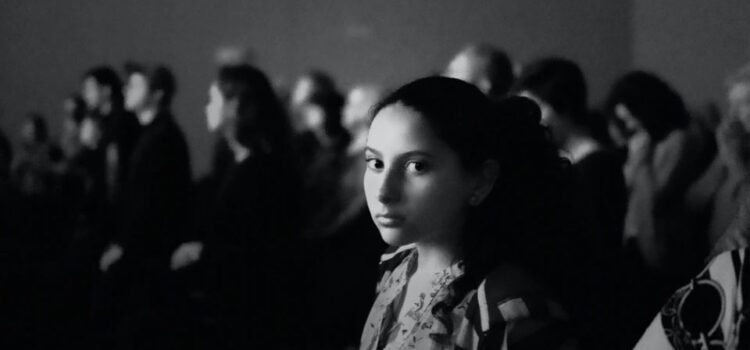

This article is an excerpt from the Shortform book guide to "Originals" by Adam Grant. Shortform has the world's best summaries and analyses of books you should be reading.
Like this article? Sign up for a free trial here .
What is the problem with groupthink in the workplace? What are some ways groupthink can affect an organization?
Groupthink suppresses dissenting opinions for the sake of social harmony and conformity. In the workplace, groupthink can become especially toxic because it discourages people to voice their ideas out of fear of disrupting social harmony. New ideas should always surface, regardless of what a fraction of people believe in and how threatening it can be to any portion of the company.
Keep reading to learn about the causes and consequences of groupthink in the workplace.
Why Does Groupthink Occur?
At one point, organizational theory experts had a consensus was that groupthink came from team cohesion – too-friendly relations between teammates. The theory proposed: if people became too chummy, they’d resist voicing dissent to avoid upsetting their friend. So for some time, managers distanced coworkers from one another. But this idea wasn’t supported by research – cohesive groups weren’t more likely to dismiss divergent opinions; cohesive groups were more likely to be secure enough to challenge one another. So this theory fell out of favor.
Others proposed that groupthink came from the practice of withholding criticism during brainstorming. This, too, was rejected: a study found that groups that debated generated more unique ideas than those that didn’t, since even incorrect dissenting opinions can be useful.
Instead of a desire for social cohesion, the more important cause of groupthink in the workplace seems to be overconfidence, and how actively dissenting voices are encouraged and rewarded in the company. The more you suffer from confirmation bias, the more susceptible the company is to decay.
- Polaroid’s CEO was infamously closed to criticism, stressing the party line about the enduring demand for print photography and insulating his pet projects like instant video. They were overconfident about their ability to predict the future, and married to the large profit margins from selling film.
How to Overcome Groupthink
In contrast, Ray Dalio’s hedge fund Bridgewater Associates is famous for its principles of radical transparency. In finance, markets don’t care about ego or popularity – whoever’s right will make money, and nonconsensus opinions have the potential for greater profit. Thus surfacing unpopular and controversial, but possibly accurate, opinions is vital to success.
Bridgewater employs a number of tactics, like:
- Dot collector – in real time, any employee can give another a vote on a wide range of characteristics, integrity, like speaking one’s mind, temperament, mediating disagreements, holding people accountable. This forms a public baseball card for each team member that can be referenced for decision making.
- Believability-weighted decision making – Bridgewater isn’t a 1-person-1-vote democracy. Instead, for any given decision, people who are more believable are given a higher weight. If a person is nonbelievable, she’s encouraged to ask questions rather than voice a dissenting opinion.
- Recording all meetings so nothing can be hidden.
- Having public discussions about their principles and resolving conflicts when they arise. Here company leaders role model receptivity to feedback, making employees more willing to challenge them and one another.
(Shortform note: for much more about Bridgewater’s work practices, read our full summary of Ray Dalio’s Principles.)
To prevent calcification, employees should be welcomed to dissent against cultural values. The best time to ask them for opinions is when they first join – they have the organization’s well-being in mind, but they haven’t been indoctrinated enough to be incapable of weeing otherwise.
Another tactic: assigning devil’s advocates to take up the other side is less effective than discovering true believers. Devil’s advocates who are assigned don’t argue forcefully enough for the minority viewpoint, and they’re perceived as insincere by group members.
- Google addresses this with a Canary team, representative engineers who represent diverse viewpoints and have a reputation for speaking their minds.
- Ray Dalio tried to discover authentic dissenters by sending out an email asking people to name 3 people who were not sufficiently fighting for what they believed in.
Another tactic: reject the maxim “don’t bring me problems; bring me solutions.” While this rewards self-initiative, it also risks premature optimization when the problem is poorly understood. People who identify important problems but don’t have clear solutions are suppressed. Encourage people to identify problems, even if they’re not sure how to solve it.
- Bridgewater has an Issue Log, a database for any employee to flag a problem and weigh its severity.
Another tactic: instead of just discussing options one at a time, force the group to rank order the alternatives. Discussing options one at a time tends to cause a public majority preference too early. Rank ordering requires weighing alternatives one against the other, allowing even the 3rd and 4th options to be debated earnestly and yielding insights that might affect the entire decision.
Checklist: Brainstorming Effectively to Reduce Groupthink
Refer to this checklist the next time you need to practice brainstorming.
- Stress how the group shouldn’t be overconfident about their position. Try to feel like an underdog, and be worried about what you’re missing.
- Don’t worry about restricting criticism – dissenting opinions are useful.
- Discover true believers for the opposite side. Invite them to the discussion, instead of just assigning a devil’s advocate.
- Force the group to rank order the alternatives, instead of just picking the best one.

———End of Preview———
Like what you just read? Read the rest of the world's best book summary and analysis of Adam Grant's "Originals" at Shortform .
Here's what you'll find in our full Originals summary :
- How to generate innovative ideas
- Why quantity is the key to quality
- How rules can inhibit a child's originality






